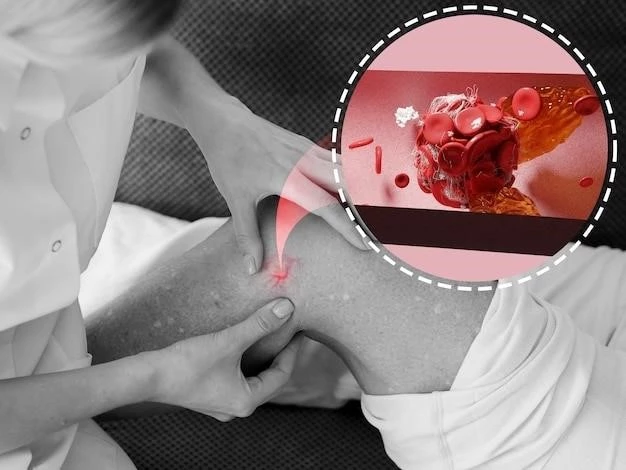Introduction to Total Hypotrichosis, Mari Type
Autosomal recessive hypotrichosis is a condition affecting hair growth characterized by sparse hair on the scalp. Total Hypotrichosis, Mari type is a rare genetic disorder first reported in the Mari ethnic population, involving generalized hair abnormalities.
Definition and Overview
Total Hypotrichosis, Mari type is a rare genetic disorder inherited in an autosomal recessive manner. It was first identified in the Mari population, characterized by widespread hair abnormalities involving sparse and short kinky hair. Mutations in certain genes play a role in the development of this condition, impacting hair growth and follicle cell processes; This condition affects individuals from infancy, leading to sparse hair on the scalp.
Genetic Causes of Total Hypotrichosis, Mari Type
Total Hypotrichosis, Mari type can be caused by mutations in the LIPH, LPAR6٫ or DSG4 genes. These genes play a crucial role in hair follicle cell processes and impact hair growth.
Mutations in LIPH, LPAR6٫ or DSG4 Genes
Mutations in the LIPH, LPAR6, or DSG4 genes can lead to autosomal recessive hypotrichosis, affecting hair growth processes. These gene mutations disrupt cell functions crucial for normal hair development, resulting in sparse and abnormal hair in individuals with Total Hypotrichosis, Mari type.

Clinical Features of Total Hypotrichosis, Mari Type
Individuals with Total Hypotrichosis, Mari type exhibit sparse and short kinky hair on the scalp, a defining characteristic of this genetic disorder present from early infancy.
Sparse Hair on the Scalp
Individuals with Total Hypotrichosis, Mari type typically present with sparse and short kinky hair primarily on the scalp, a key clinical feature of this rare genetic condition. The hair abnormalities are evident from early infancy in affected individuals.
Diagnosis and Assessment of Total Hypotrichosis, Mari Type
To diagnose Total Hypotrichosis, Mari type, genetic testing such as exome and Sanger sequencing is crucial in identifying mutations in genes like LIPH, LPAR6, or DSG4.
Exome and Sanger Sequencing
Exome and Sanger sequencing techniques are employed in the diagnosis of Total Hypotrichosis, Mari type to identify genetic mutations in implicated genes like LIPH, LPAR6, and DSG4. These methods help in determining the genetic basis of the condition.
Epidemiology and Population Distribution
Total Hypotrichosis, Mari type is a rare genetic disorder primarily found in the Mari population, characterized by generalized hair abnormalities. Data on the prevalence in this ethnic group is currently being developed.
Prevalence in the Mari Ethnic Population
The prevalence of Total Hypotrichosis, Mari type is notably observed within the Mari ethnic population. This rare genetic disorder has a distinct association with individuals of Mari descent, highlighting the unique epidemiological distribution of this condition.
Management and Treatment Approaches
Management of Total Hypotrichosis, Mari type focuses on symptomatic treatments to address the sparse hair and associated scalp abnormalities, as specific curative treatments are not yet available.
Symptomatic Treatment Strategies
Symptomatic treatments are the primary approach in managing Total Hypotrichosis, Mari type. These treatments focus on addressing the sparse hair and scalp abnormalities seen in affected individuals, as specific curative treatments for this genetic disorder are currently unavailable.
Research Studies and Advances
Studies focus on the genetic basis of Total Hypotrichosis, Mari type within the specific Mari population, aiming to advance understanding of this rare genetic disorder.
Genetic Studies in the Mari Population
Research studies focus on understanding the genetic underpinnings of Total Hypotrichosis, Mari type specifically within the Mari population, aiming to unravel the complexities of this rare genetic disorder.
Impact on Quality of Life
Total Hypotrichosis, Mari type can have psychological and social implications due to the visible sparse hair abnormalities. Learn about the impact and coping strategies.
Psychological and Social Implications
Total Hypotrichosis, Mari type can have significant psychological and social implications due to the visible sparse hair abnormalities, impacting individuals’ self-esteem and social interactions. Seeking support and coping strategies is essential for affected individuals and their families in managing these challenges.
Support Resources for Patients and Families
National Organization for Rare Disorders (NORD) offers support and information for individuals and families affected by Total Hypotrichosis, Mari type. Contact NORD for assistance.
National Organization for Rare Disorders (NORD)
The National Organization for Rare Disorders (NORD) provides valuable support and resources for individuals and families affected by Total Hypotrichosis, Mari type. Contact NORD for assistance and information.
Ongoing Studies and Future Directions
Ongoing genetic studies within the specific Mari population aim to further understand the underlying mechanisms of Total Hypotrichosis, Mari type and explore potential treatment avenues for the future.
Current Research Focus and Developments
Current research on Total Hypotrichosis, Mari type is aimed at understanding the genetic mechanisms within the Mari population, with ongoing studies focusing on potential treatment advancements and future directions for managing this rare genetic disorder.

Conclusion
In conclusion, Total Hypotrichosis, Mari type is a rare genetic disorder with distinct hair abnormalities, impacting individuals since infancy. Ongoing research aims to uncover further insights into this condition for better management and potential treatment advancements in the future.
Summary of Total Hypotrichosis, Mari Type
Total Hypotrichosis, Mari type is a rare autosomal recessive genetic disorder characterized by sparse hair abnormalities, particularly seen on the scalp from early infancy. Ongoing genetic studies aim to advance understanding and potential treatments for this condition.
